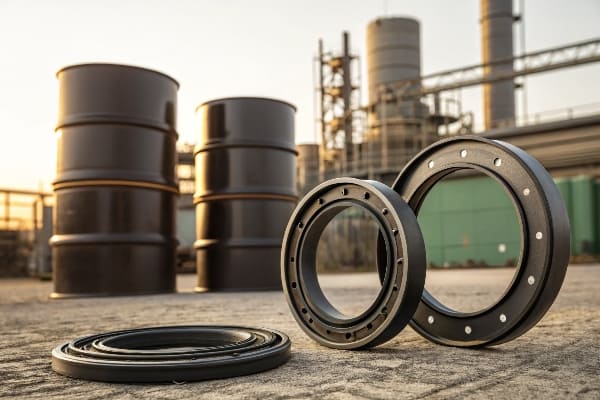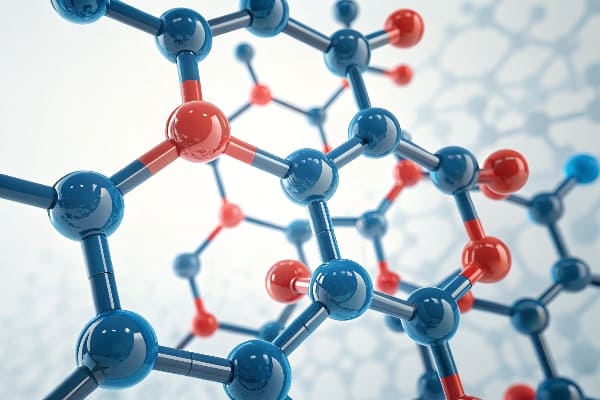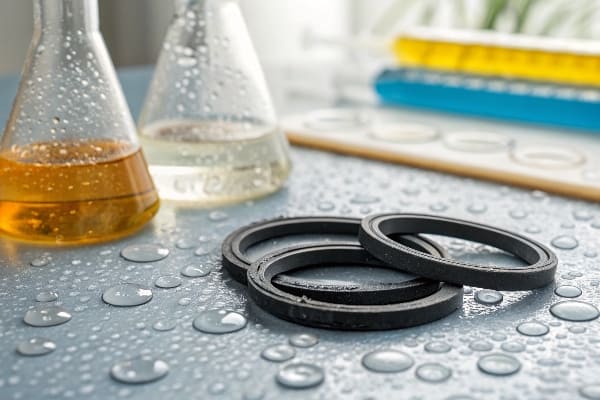Wondering if nitrile rubber (NBR) can handle solvents in your application? NBR is widely known for its oil and fuel resistance, but how does it stand up against solvents? Let’s find out.
Yes, nitrile rubber (NBR) is resistant to many solvents, especially oils, fuels, and petroleum-based products. However, its resistance to other solvents like ketones, esters, and some alcohols may be limited.

NBR's chemical resistance is one of its strongest attributes, making it ideal for sealing and gasketing in industries where exposure to oils and fuels is common. Let’s dive deeper into which solvents NBR can resist and which ones it may struggle with.
What Is Nitrile Rubber (NBR)?
Before we explore NBR’s resistance to solvents, it’s important to understand what nitrile rubber is and why it’s often chosen for chemical and industrial applications.
Nitrile rubber (NBR) is a synthetic elastomer made from the copolymer of acrylonitrile and butadiene. It is well-known for its excellent resistance to oils, fuels, and a range of chemicals.

Nitrile rubber (NBR)1 is a versatile synthetic rubber that offers excellent resistance to oils, fats, greases, and many petroleum-based products. NBR is formed through the polymerization of acrylonitrile and butadiene, which gives it its strong chemical resistance properties. The amount of acrylonitrile in the copolymer determines the material’s resistance to various chemicals, including solvents.
The higher the acrylonitrile content, the better the NBR’s resistance to oils and fuels. However, an increased acrylonitrile content also reduces its flexibility and low-temperature performance. NBR is often used for sealing applications, such as O-rings, gaskets, and fuel hoses, in automotive, aerospace, and industrial applications.
Key Characteristics of NBR:
- Excellent oil and fuel resistance2: NBR is ideal for applications exposed to oils, fuels, and lubricants.
- Good wear resistance3: NBR performs well under mechanical stress, making it suitable for seals and gaskets.
- Limited cold weather performance: As NBR has lower flexibility at lower temperatures, it is often used in environments where temperatures do not fall below freezing.
| Property | Nitrile Rubber (NBR) |
|---|---|
| Chemical Resistance | Good resistance to oils, fuels, and petroleum-based products |
| Temperature Range | -40°C to +100°C (depending on grade) |
| Flexibility | Moderate at low temperatures, decreases with increased acrylonitrile content |
✅ Why it matters:
Understanding NBR’s basic properties helps in selecting the right material for your application, ensuring that it performs well when exposed to oils, fuels, and certain solvents.
Is NBR Resistant to Solvents?
Are you concerned about whether NBR can handle solvents in your industry? Let’s take a closer look at how NBR holds up when exposed to different types of solvents.
NBR is resistant to many common solvents, particularly petroleum-based solvents, but its resistance can vary depending on the specific solvent. Some solvents, like ketones and esters, may cause NBR to degrade over time.

Nitrile rubber is resistant to a broad range of solvents, but its performance depends on the type of solvent and the concentration. Let’s break down how NBR behaves when exposed to different types of solvents:
Solvents NBR Resists Well:
- Petroleum-based solvents4: NBR is highly resistant to oils, fuels, and other petroleum-based solvents. This makes it the go-to material for fuel hoses, O-rings, and gaskets in automotive and industrial applications.
- Hydrocarbons: NBR performs well against aliphatic and aromatic hydrocarbons, which are commonly found in oil, grease, and gasoline.
Solvents NBR Struggles With:
- Ketones (e.g., acetone)5: NBR is not highly resistant to ketones, as they can break down the polymer chains in the rubber, leading to swelling and reduced performance.
- Esters and ethers6: Solvents like esters and ethers can also degrade NBR, leading to swelling, cracking, or a reduction in mechanical properties.
- Some alcohols: Alcohols, particularly in higher concentrations, can cause NBR to weaken, although it may resist lower concentrations of alcohols like methanol or ethanol.
| Solvent Type | NBR Resistance | Performance Insights |
|---|---|---|
| Petroleum-based Solvents | Excellent | Ideal for fuel, oil, and grease applications |
| Hydrocarbons | Good | Strong performance in oils and fuels |
| Ketones | Poor | Causes swelling and degradation over time |
| Esters and Ethers | Poor | Degradation likely, especially in high concentrations |
| Alcohols | Moderate | Works in low concentrations, but high concentrations can weaken NBR |
✅ Why it matters:
Selecting NBR for solvent-resistant applications ensures long-term reliability in industries dealing with petroleum-based products. However, for environments with high concentrations of solvents like ketones, esters, or alcohols, other materials might be more suitable.
How to Choose the Right Rubber for Solvent Resistance?
Wondering how to select the best rubber material for solvent exposure? The right choice depends on the solvent type, concentration, and environmental conditions.
When choosing rubber for solvent resistance, consider the specific solvent, concentration, and temperature. NBR works well for petroleum-based solvents, but alternatives may be needed for ketones or esters.
Choosing the right rubber for solvent resistance involves evaluating the solvent type and other factors such as temperature and pressure. Here are some important considerations:
- Solvent Type: Determine which solvents your rubber will be exposed to. For petroleum-based solvents like oils and fuels, NBR is often the best choice. For ketones or alcohols, other elastomers like fluorocarbon rubber (FKM) or silicone may provide better resistance.
- Concentration: The concentration of the solvent plays a crucial role in how rubber behaves. High concentrations of aggressive solvents like acetone or concentrated alcohols may require more resistant materials like Viton or fluorosilicone.
- Temperature: Temperature can affect the rubber’s performance. For high-temperature environments, Viton or silicone may be better than NBR, which has a more limited temperature range.
- Application Type: Whether your application involves seals, gaskets, hoses, or O-rings, each has specific requirements for solvent resistance. Consider the mechanical stress, pressure, and frequency of exposure when selecting the appropriate rubber.
Key Factors to Consider When Choosing Rubber for Solvent Exposure:
| Factor | Best Rubber Choices | Key Considerations |
|---|---|---|
| Solvent Type | NBR (for oils, fuels), Viton7 (for ketones, esters) | Match rubber with solvent properties |
| Concentration | NBR (for low concentrations) | Higher concentrations may need Viton or fluorosilicone8 |
| Temperature | NBR, Viton, Silicone | Consider temperature resistance needed |
| Application Type | NBR, Viton | Choose based on sealing or gasketing needs |
✅ Why it matters:
Proper material selection based on solvent exposure ensures the longevity of your components and avoids premature degradation or failure.
Conclusion
Nitrile rubber (NBR) is highly resistant to many solvents, especially oils and fuels. However, its resistance is not universal, and solvents like ketones, esters, and high concentrations of alcohols can cause degradation. By considering the type of solvent, concentration, and temperature, you can select the best rubber for your specific application.
🚀 Need Custom Rubber Solutions for Solvent-Resistant Applications?
Contact Julong Rubber today or Request a Custom Quote for high-quality rubber components tailored to your specifications!
Or reach out to us directly via WhatsApp:
Explore this link to understand the diverse applications and advantages of Nitrile rubber, enhancing your material selection process. ↩
Discover the science behind Nitrile rubber's oil and fuel resistance, crucial for industries relying on durable materials. ↩
Learn about the properties that contribute to Nitrile rubber's wear resistance, essential for high-performance applications. ↩
Exploring this resource will provide insights into the effectiveness and applications of petroleum-based solvents, crucial for understanding NBR's resistance. ↩
This link will help you understand the impact of ketones on rubber, essential for selecting the right materials for specific applications. ↩
Learning about the effects of esters and ethers on rubber can guide material selection for solvent-resistant applications. ↩
Learn about Viton's advantages in high-temperature and aggressive solvent environments, ensuring optimal performance. ↩
Discover how fluorosilicone can enhance performance in challenging chemical environments, making it a valuable choice. ↩








